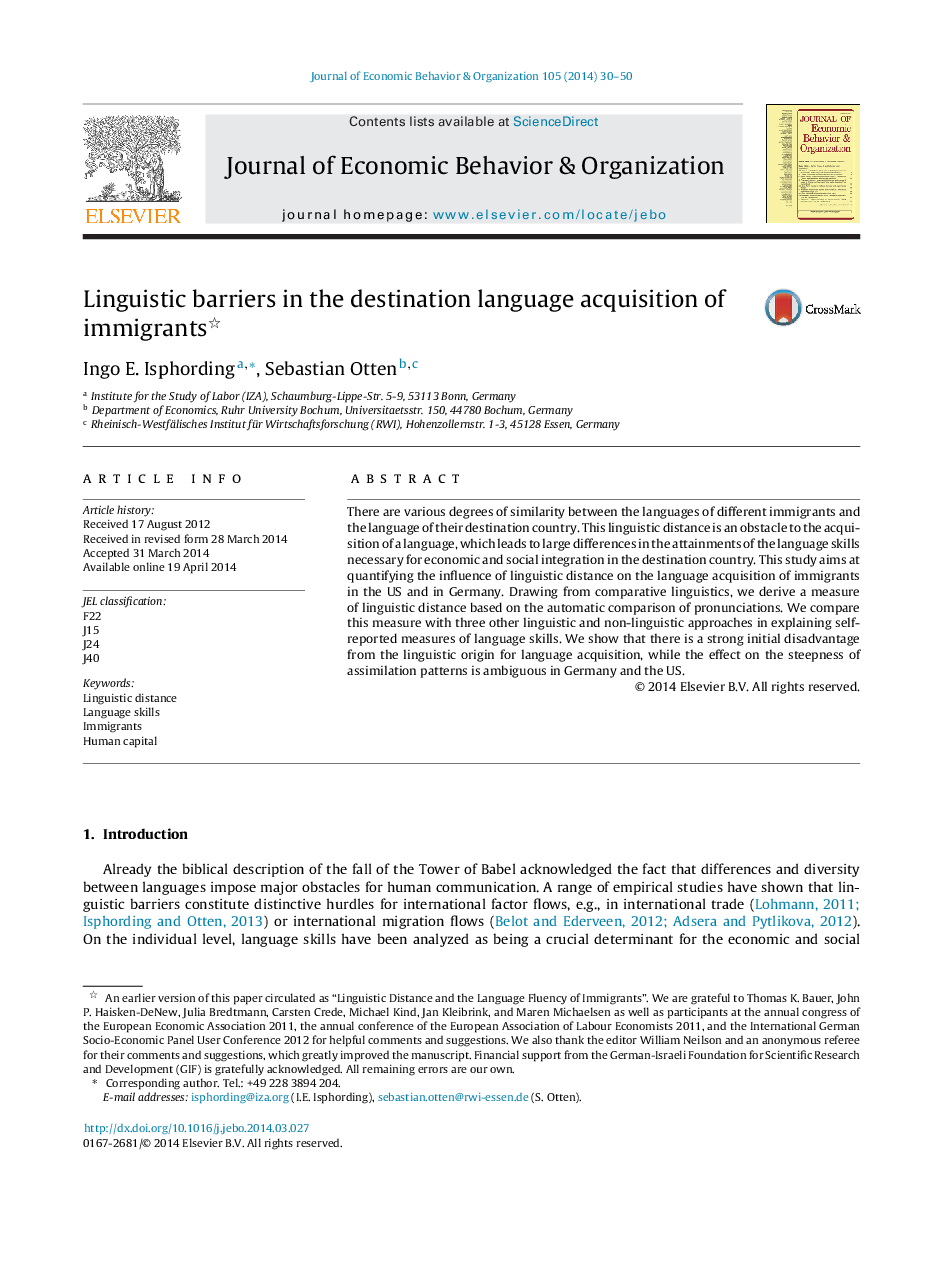| Article ID | Journal | Published Year | Pages | File Type |
|---|---|---|---|---|
| 883498 | Journal of Economic Behavior & Organization | 2014 | 21 Pages |
•In-depth analysis of language acquisition of immigrants in Germany and the US.•Focus: heterogeneity in linguistic origin.•First time application of novel, linguistically based measure of linguistic distance.•Significant advantages: applicable to any of the world's languages, transparently computable.•Results: considerable costs for language acquisition, linguistic distance explains large fraction of heterogeneity.
There are various degrees of similarity between the languages of different immigrants and the language of their destination country. This linguistic distance is an obstacle to the acquisition of a language, which leads to large differences in the attainments of the language skills necessary for economic and social integration in the destination country. This study aims at quantifying the influence of linguistic distance on the language acquisition of immigrants in the US and in Germany. Drawing from comparative linguistics, we derive a measure of linguistic distance based on the automatic comparison of pronunciations. We compare this measure with three other linguistic and non-linguistic approaches in explaining self-reported measures of language skills. We show that there is a strong initial disadvantage from the linguistic origin for language acquisition, while the effect on the steepness of assimilation patterns is ambiguous in Germany and the US.
